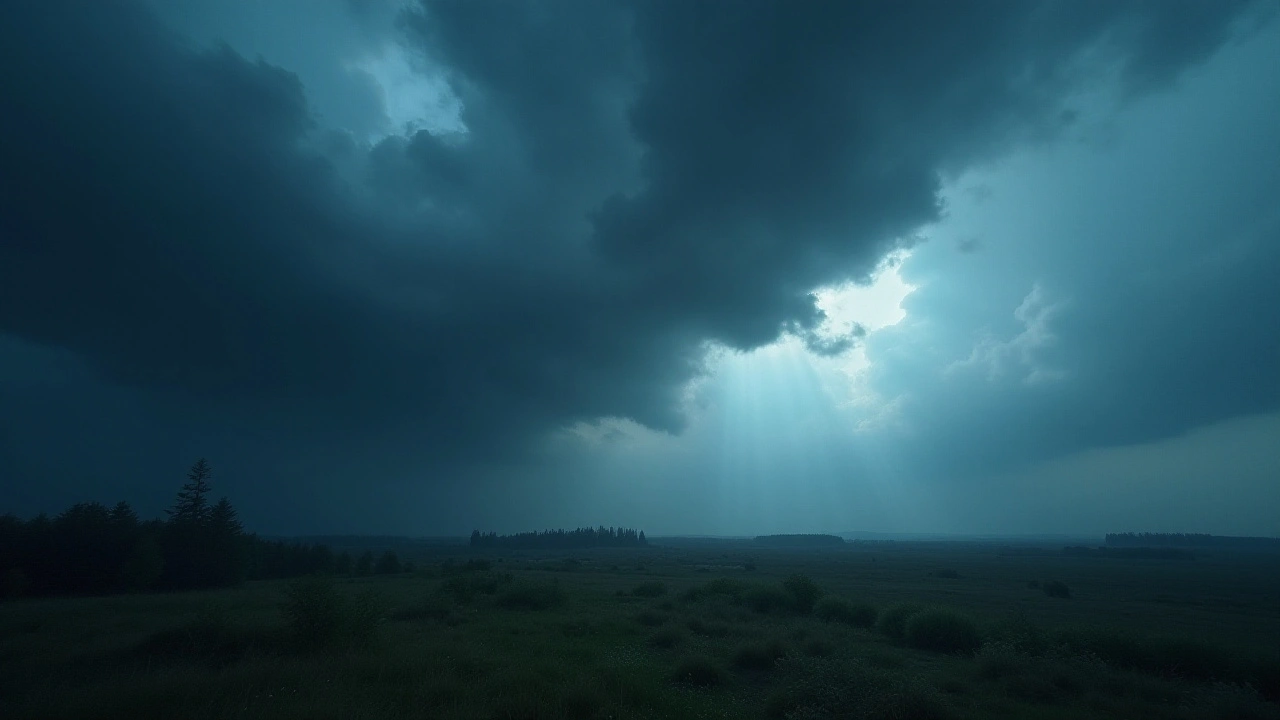Massive 7.0 Earthquake Hits Sea of Okhotsk
In the early hours of August 18, 2024, a powerful 7.0-magnitude earthquake rocked the Sea of Okhotsk, situated off the Russian Far East. The quake, which struck at approximately 03:45 local time, had its epicenter located about 350 kilometers northeast of Magadan, a city known for its mining and fishing industries. Despite the ferocity of the quake, initial reports from the Russian Emergencies Ministry indicated no immediate casualties or significant structural damage.
Immediate Aftermath and Response
As soon as the ground started shaking, emergency services jumped into action, placing the area on high alert. People in the regions of Magadan Oblast and Kamchatka Krai, areas known for their breathtaking landscapes and volcanic activity, felt the tremors. Authorities immediately deployed teams to assess any potential damage and assist residents. Despite the earthquake's substantial depth at around 10 kilometers, there were fortunately no reports of tsunamis or significant disruptions to critical infrastructure. Coastal residents were, however, advised to stay vigilant and follow any emergency evacuation instructions if necessary.
Depth and Epicenter Location
With an estimated depth of around 10 kilometers, this earthquake had a somewhat shallow epicenter. Shallow earthquakes often pose more risk due to their proximity to the Earth's surface, potentially leading to more destruction. However, in this incident, the location in the Sea of Okhotsk, far from densely populated areas, minimized its impact. The seismic activity was still felt across various regions including Magadan Oblast and Kamchatka Krai, noted for housing active volcanoes and part of the Pacific Ring of Fire, a hotspot for seismic activity.
Residents’ Experiences
Many residents reported feeling the strong tremors shaking their homes and workplaces. While there was initial panic, the rapid response from emergency services helped to keep the situation under control. Several locals described the moment as disconcerting, waking up in the middle of the night to their objects swaying and lights flickering. "It was frightening; the whole building was shaking. We didn't know what to expect," said a resident from Magadan. In Kamchatka Krai, known for its rugged terrain and natural beauty, similar stories emerged from people startled by the sudden quake.
Precautionary Measures and Monitoring
As a precaution, emergency services in the area were placed on high alert immediately following the earthquake. Authorities set up monitoring stations to closely observe any aftershocks, as these secondary quakes can sometimes cause more damage than the initial tremor. They also continued to communicate with local communities, ensuring that residents had access to information on how to stay safe, especially in coastal zones where tsunami threats, though not reported in this case, can be a concern. The Russian government emphasized the importance of having emergency kits and knowing local evacuation routes.
Global Seismic Activity
This earthquake is a reminder of the persistent and unpredictable nature of seismic activity around the world, particularly along the Pacific Ring of Fire. Scientists and geologists continue to study these phenomena to better predict and understand the movements of tectonic plates. The region has experienced numerous significant earthquakes in the past, and it is always prepared for the possibility of future seismic events.
Conclusion
The 7.0 magnitude earthquake in the Sea of Okhotsk served as a wake-up call for residents in the Russian Far East, yet underlined the region's preparedness and resilience. While the quake caused a significant jolt, the lack of immediate casualties or major damage was a relief. Authorities' swift actions and continuous monitoring provided a sense of security to the locals, who are no strangers to the earth’s often volatile nature. As the region recovers and remains vigilant for potential aftershocks, the Russian Far East stands as a testament to effective emergency preparedness in the face of natural disasters.




Seeing the rapid mobilization of emergency crews in the Russian Far East really highlights how vital preparedness is, especially in regions that sit on active fault lines. The fact that there were no immediate casualties speaks to the effectiveness of early warning systems and community drills. It's a good reminder for all of us to keep emergency kits updated and know our evacuation routes.
While commendable, the report neglects to examine the broader geostrategic ramifications of seismic events in proximity to Russian maritime interests. A more rigorous analysis would juxtapose this tremor against historic tectonic activity and its potential impact on naval logistics. The omission of such context renders the piece somewhat superficial.
What a shakeup that was.
It is truly inspiring to observe how communities rally together in the face of natural adversity, especially when the ground beneath them quivers with such force. The resilience displayed by the residents of Magadan and Kamchatka serves as a testament to human adaptability and the power of collective preparedness. Even though the tremor measured a formidable magnitude of 7.0, the swift actions of local authorities mitigated what could have been a far more tragic outcome. The deployment of monitoring stations and the dissemination of clear safety guidelines exemplify best practices in disaster response. Moreover, the willingness of individuals to assist their neighbors reinforces the social fabric that binds these remote settlements. In my experience, such solidarity often emerges most strongly in regions where the environment is unforgiving and resources are scarce. The continued vigilance shown by emergency services ensures that aftershocks will be promptly addressed, minimizing further risk. It also underscores the importance of regular drills, which appear to have paid off in this scenario. While some may focus solely on the absence of damage, it is equally vital to acknowledge the psychological comfort provided by transparent communication. Knowing that authorities are actively monitoring the situation reduces panic and fosters a sense of security. The article rightly highlights the lack of immediate casualties, yet it could have delved deeper into the long‑term recovery plans. These include infrastructure reinforcement and community education programs aimed at enhancing earthquake resilience. Such initiatives not only protect lives but also preserve the cultural heritage embedded in these northern towns. As we reflect on this event, let us celebrate both the scientific advancements that enable early detection and the human compassion that drives effective response. In doing so, we set a powerful example for other regions vulnerable to seismic threats.
Honestly, the whole story feels a bit overhyped; a magnitude 7.0 in a sparsely populated sea isn’t exactly a global crisis. Most of the damage stayed locked away from major cities, so the “wake‑up call” narrative seems exaggerated. People love to dramatize earthquakes because it makes headlines, but the practical impact here was minimal.
i totally get u Nelleke – the media can be a bit extra 😅 however it's also a chance for us to remind folks that even remote quakes can teach valuable lessons 😊 the scientists keep track of all that data and it helps us predict future events better 🙏 yeah sometimes the headlines sound loud but the underlying science is solid 📊 also, staying prepared is never a bad idea even if the quake was far away 🌏
You did a great job summarizing the key points, and your focus on community safety really shines through. It's important to keep emphasizing that emergency preparedness is a continuous effort, not just a reaction to a single event.
Wow such a calm tone after a massive shake
The earthquake definitely put the spotlight on the region's seismic vulnerability, but it also showed how quickly people can mobilize when needed. I think it's a good reminder that we should all keep an eye on local safety resources, no matter where we live.
Honestly this report feels kinda bland – they could've spiced it up with more vivid details about the rumbling ground and the frantic hustle of rescue teams. The narrative is flat and misses the chance to capture the sheer drama of a 7.0 quake rattling the night sky.
What a powerful reminder that Mother Russia's vast lands are as resilient as her spirit. Our brave responders proved once again that we stand strong against nature's fiercest tempests, protecting our people with unmatched dedication.
sure all that “swift response” is just a PR stunt they want to show the world they’re in control always hiding the real damage underground
It is indeed noteworthy that the emergency services acted with such alacrity; the rapid deployment of monitoring stations, the dissemination of clear evacuation instructions, and the coordination among various agencies all contributed significantly to the mitigation of potential harm.
Absolutely! Let’s keep that momentum going and encourage everyone to update their emergency kits and rehearse evacuation drills – together we can stay safe and strong!
Isn’t it fascinating how the earth reminds us that stability is an illusion, and yet we keep building our lives on its shifting foundations?
While the article paints a picture of seamless preparedness, one must question whether undisclosed geological assessments are being withheld from the public. The narrative seems curated to project an image of flawless response, which may conceal deeper systemic vulnerabilities that merit scrutiny.
Earthquakes are nature’s way of telling us that the planet is a living, breathing entity, constantly reshaping itself 🌍✨ When we listen to its movements, we gain insight into the interconnectedness of all things 🙏💫
this piece reads like a cheap PR fluff no depth no real analysis